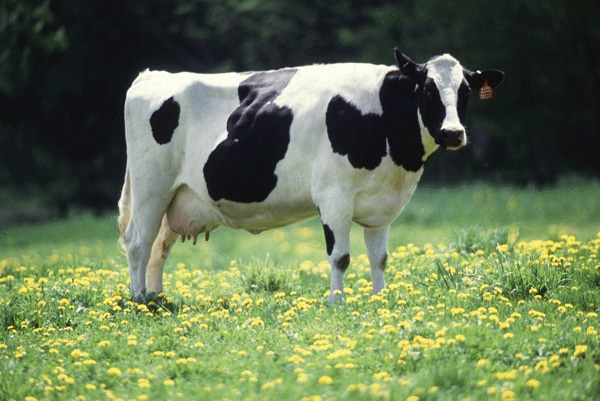
• The farms that will be inspected have not yet been chosen.• Producers whose farms are inspected will receive 24 to 48 hours’ notice before an inspection, and the EPA will be looking at their farms’ impact on surface water and groundwater, as well as their best management practices to protect water quality.
April 25, 2011

About half a dozen smaller dairy farms in the Shenandoah Valley will be subject to inspection by the U.S. Environmental Protection Agency in the first half of May, valley dairy operators learned at a meeting with EPA officials.
The meeting provided an opportunity for dairy farmers to learn about the EPA’s inspection process and what types of activities the federal inspectors will be looking for, said Tony Banks, a Virginia Farm Bureau Federation commodity marketing specialist. "The farmers have a lot of concerns. That was evident from the large turnout and the variety and number of questions producers had for EPA."
The farms that will be inspected have not yet been chosen, EPA Environmental Scientist Mark Zolandz said, but they are likely to be operations that do not have Virginia Pollution Abatement program permits, which are required for dairies with more than 200 cows.
Producers whose farms are inspected will receive 24 to 48 hours’ notice before an inspection, and the EPA will be looking at their farms’ impact on surface water and groundwater, as well as their best management practices to protect water quality.
Called a hot spot
Zolandz said the Shenandoah Valley is one of three "hot spots" that the EPA has identified with regard to impaired waterways. The other two are the Delmarva Peninsula and Lancaster County, Pa. The EPA inspected seven valley livestock and poultry farms last spring, issuing orders at two to correct deficiencies, and Zolandz said the farm operators complied.
"Working with Virginia farmers has been a lot different from working with farmers in some other states where we’re active," he noted.
Zolandz said the focus of the upcoming inspections will be "Is there an impact on surface water from this facility?" and not the specific content of runoff from farms. The EPA in late 2010 implemented a total maximum daily load, or nutrient "diet," for waterways in the Chesapeake Bay watershed. "We’re not doing an inspection of the farm to see ‘Is he meeting his TMDL requirements?’" Zolandz said.
The American Farm Bureau Federation has filed a lawsuit against the EPA to halt the TMDL program.
U.S. Rep. Bob Goodlatte, R-6th, who represents the Shenandoah Valley, acknowledged the state’s regulatory programs and took issue at the meeting with the assertion that the EPA can, under the Clean Water Act, declare an entire farm a point source for water pollution. "I’m really concerned that you are looking for opportunities to come in and regulate a place where you do not need to regulate," he said.
Asked about his thoughts on the meeting after it concluded, Augusta County dairy operator Dan Holsinger said, "We need this. We need to get together, and we need to talk."
Also needed, he said, is an understanding "that we can’t always control all the variables. We can do everything we want to do to help protect the Bay, and all it takes is one big incident like last Saturday when you get 7 inches of rain. It’s like everything just goes down the drain, and you can’t control that. Yet it comes back to haunt us that we’re not doing enough."
Holsinger said valley farmers as a group have made tremendous strides in protecting water quality.
"We’ve got to live here, and our kids have got to live here."
You May Also Like



